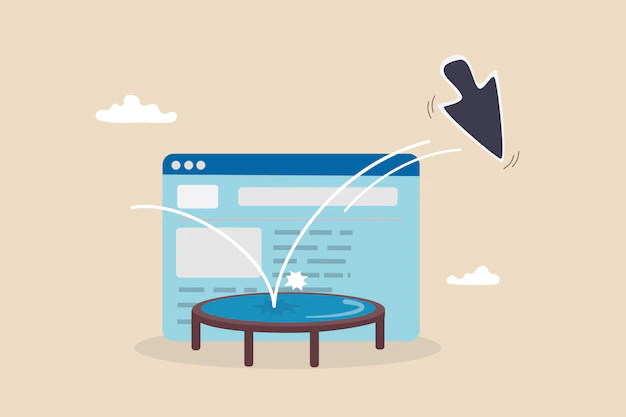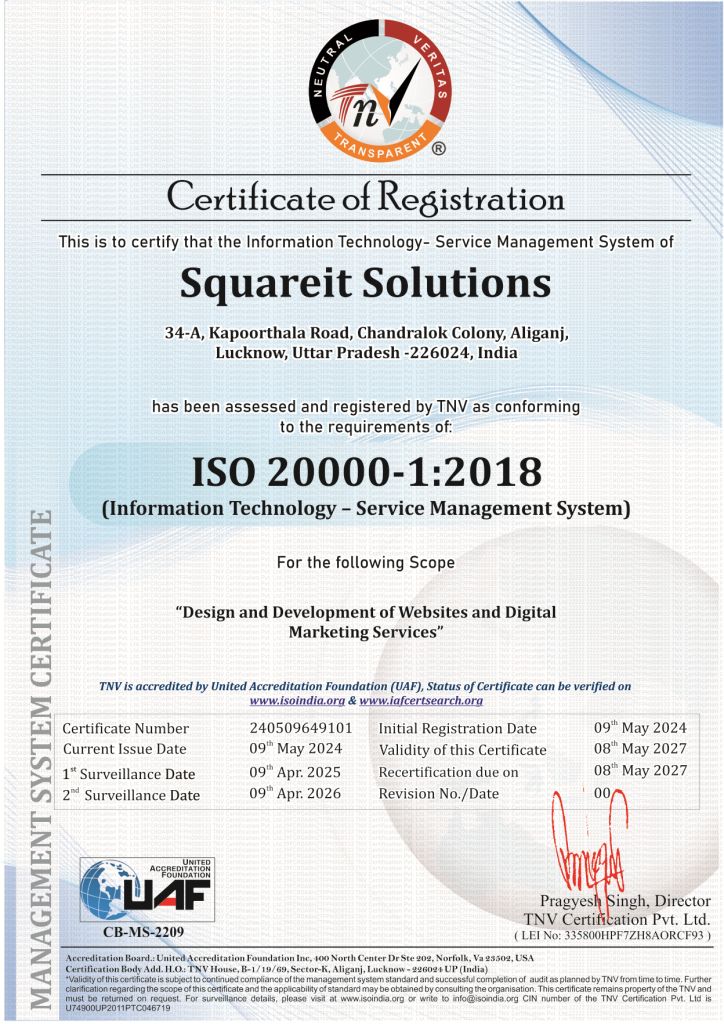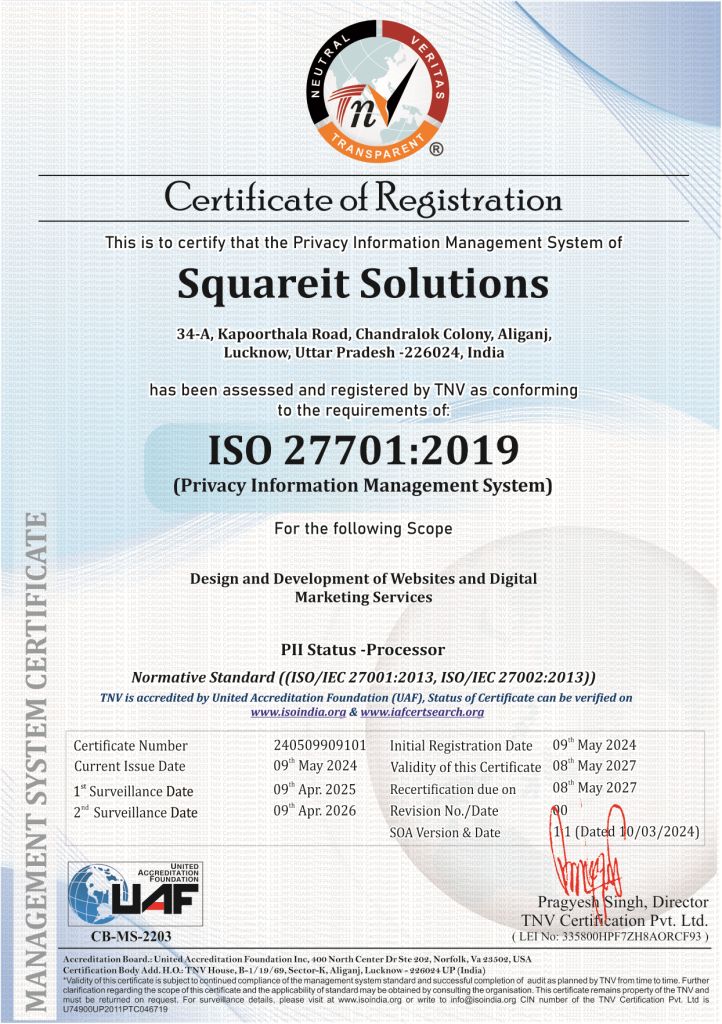It is important for websites to not have a high bounce rate because it leads to less engagement of the visitor on your webpage and they leave the webpage without browsing anything.
What is a high bounce rate?
Bounce rate means the percentage of visitors to a particular website who navigate away after viewing only one page.
It is important for websites to not have a high bounce rate because it leads to less engagement of the visitor on your webpage and they leave the webpage without browsing anything.
It calculates how many times visitors left the page without performing any action. You should have knowledge about high bounce rates reasons and how can be prevented or else it will affect your digital marketing strategies.
14 Reasons for High Bounce Rate
Following are some important reasons for high bounce rate:
1. Unrelatable content
People generally land on websites to learn more about a particular subject. If your content doesn't address their need they will jump to another site.
It is important to understand your audience, and why they have to choose you over another competing site.
2. Poor user experience
Your audience will decide to stay or leave. If the colours are not pleasing enough, the layout is not organised and your navigation is not easy and intuitive your visitor Will click the back button instead of navigating further.
When it comes to the user experience you should remain lean. A simple but eye-pleasing layout and a navigation menu that is quick and relatable will do the job.
3. Technical errors
If your javascript malfunctions or a plugin went down leading to a form not loading. These errors may remain on your site without you knowing about them.
If you notice the bounce rate is high you must visit the site as a fresh visitor are try to find out the problem and its solution. Only then you may expect to fall in bounce rate.
4. Speed issue
Your website should load instantly. Anything longer than a few seconds is too long. Use a platform like GTMetrics which will tell about your website speed.
If your site is loading too slowly, the platform will give you tips about how to fix it. Google search insoles can make a difference.
5. Asking for too much
Never ask about their credit cards, grandparents' pension, Social Security, children's names etc. People are aware of online scams so asking about too many personal details may increase the bounce rate.
6. Bad or obnoxious UX
If your website is bombarding with ads, pop-up surveys and e-mail subscriptions button will make your visit run away from your website.
The CTA-heavy features may be irresistible but using too many can increase your bounce rate.
7. The page isn't user friendly
We know it is important to have a mobile-friendly webpage but the practice is not always followed in the real world.
Google index is switching to mobile but nearly a quarter of top websites are not mobile-friendly.
A website that hasn't opted for mobile doesn't look good on mobile and they load too slow. It can increase your bounce rate.
8. Self-sufficient content
Sometimes your content is sufficient enough that people can get it quickly and bounce. It's a good thing that you have achieved the content marketer's dream and created awesome content.
If users are spending a couple of minutes on your page it gives a positive signal to Google. You can conduct user experience testing to see highly bounce rate is a problem or not.
9. Dis-proportional contribution by a few pages
If your single CTA-landing page satisfies your user intent and causes you to bounce quickly after taking an action but your longer-form page has a low, bounce rate you need not worry. Consider adding an advance filter to remove these pages.
10. Misleading title tags and meta descriptions
Review the content of your page and adjust the title tags and meta description or rewrite the content to address the search queries you want to attach visitors for.
You can also check what kind of meta description Google has generated for your page for common search.
11. Blank page
If your bounce rate is exceptionally high and you see people are spending less than a few seconds on the page. Your page is likely blank, returning 404 or not loading properly.
Take a look at your audience's most popular browser and device configuration to replicate their experience.
12. Bad links from another website
You could be doing everything perfectly to achieve a normal or low bounce rate but still, you have a high bounce rate from your referral traffic.
The referring site could be sending you qualified visitors or anchor text and the content for text could be misleading.
13. Affiliate landing page or single Page site
If you are an affiliate your page will send away the traffic from your website to the merchandise site.
In this case, you are doing the right job if a page has a high bounce rate. A similar case is possible if you have a single page site.
14. Creating low-quality content that is hard to understand
The visitor may bounce from your website if you have lousy content. Take a look at your page and ask yourself and your friends, and colleagues for their honest reviews.
Writing for the web is different from writing offline publications. Brush your online writing skills so people spend more time on your website.
20 Ways to Prevent Website from High Bounce Rate
1. Pay attention to load time
2. Make easy website search
3. Provide a better user experience
4. Optimize your call of action placement
5. Make your content more accessible
6. Use sidebar widget and promotion sparingly
7. Use cross-reference bounce rate with time on site
8. Include a single, clear call to action
9. use logical and useful internet links
10. Spend time on your product page to improve the conversion rate
11. Make your site easy to search
12. Optimize for a mobile-friendly website
13. focus on good website design
14. Make web pages easy to read
15. Use multiple form content in order to engage site visitor
16. Use appropriate keywords and target a relevant audience
17. Stay away from pop-up ads and limits the irrelevant ads
18. Pay attention to internal links to keep users there
19. Create fresh content frequently
20. Use Google Analytics







